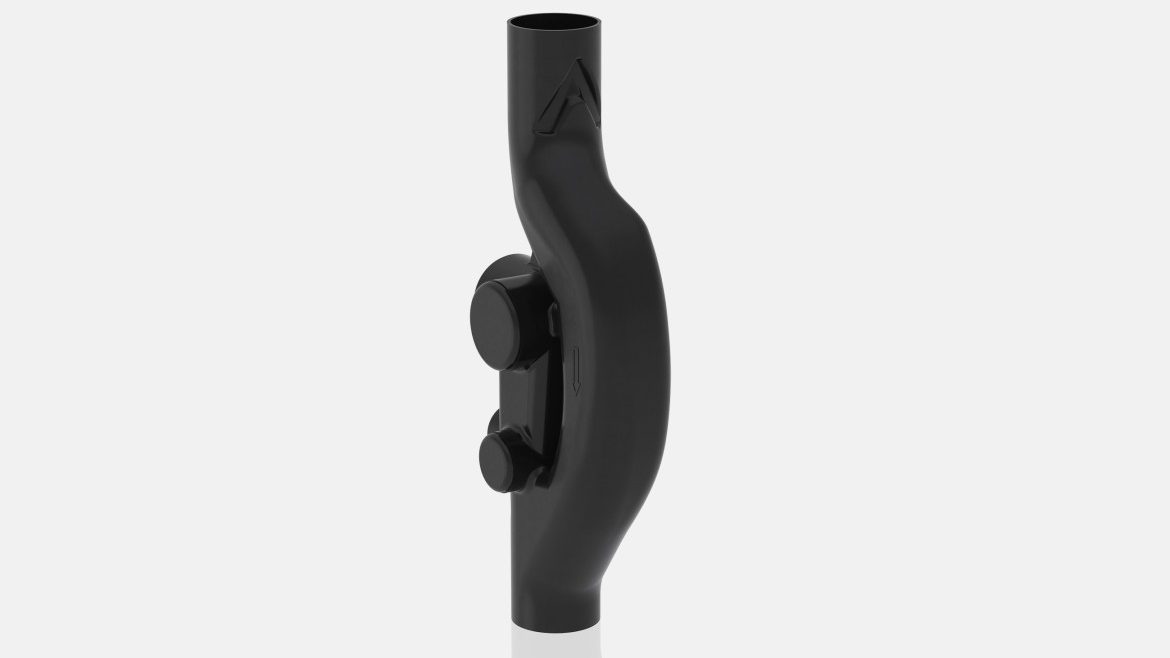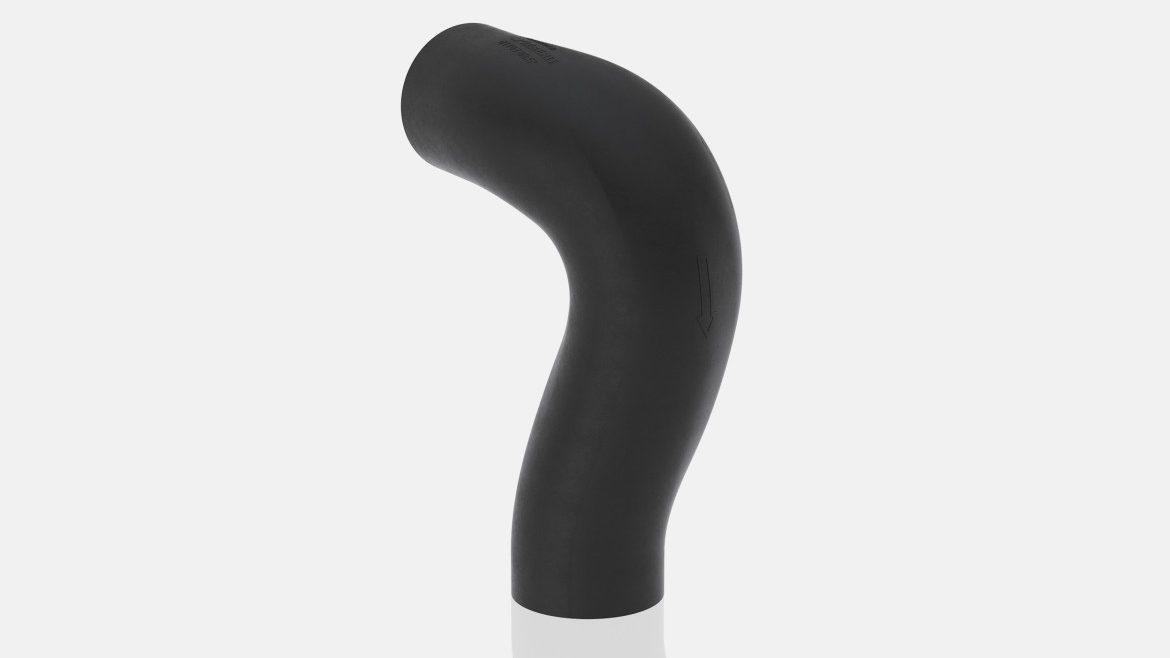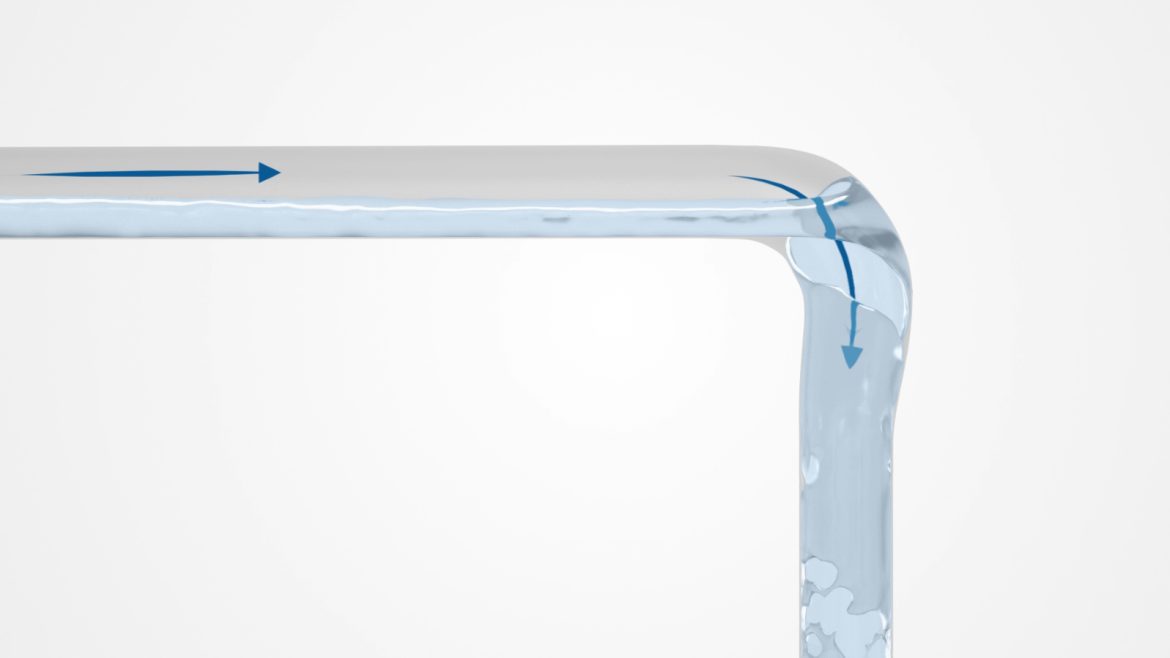SAY GOODBYE TO A PARALLEL VENT PIPE IN YOUR SHAFT WITH GEBERIT SUPERTUBE, THE LATEST SANITARY TECHNOLOGY FROM GEBERIT TO LAUNCH THIS YEAR
TEXT: PAPHOP KERDSUP
PHOTO COURTESY OF GEBERIT
(For English, please scroll down)
เพราะความจำเป็นในการบาลานซ์ระหว่างความดันบรรยากาศกับความดันอากาศภายในท่อน้ำทิ้ง เพื่อให้น้ำเสียที่เกิดขึ้นสามารถระบายออกไปได้อย่างสะดวก และช่วยไม่ให้เกิดสภาวะสุญญากาศขึ้นภายในท่อนี้เอง ที่ทำให้ “ท่ออากาศ” กลายเป็นองค์ประกอบสำคัญที่อยู่คู่กับระบบสุขาภิบาลของงานสถาปัตยกรรม โดยเฉพาะอย่างยิ่งกับอาคารสูงมาโดยตลอด อย่างไรก็ตาม ดูเหมือนว่าเทคโนโลยีล่าสุดที่ Geberit เพิ่งจะคิดค้นขึ้นเมื่อเร็วๆ นี้อย่าง Geberit SuperTube จะกลายเป็นสิ่งใหม่ที่จะเข้ามาเพิ่มทางเลือกให้กับ (หรืออาจถึงขั้นเปลี่ยน หากต้นทุนการผลิตปรับตัวลงในอนาคต) วิธีการออกแบบทางวิศวกรรมงานระบบอาคารได้อย่างน่าสนใจทีเดียว
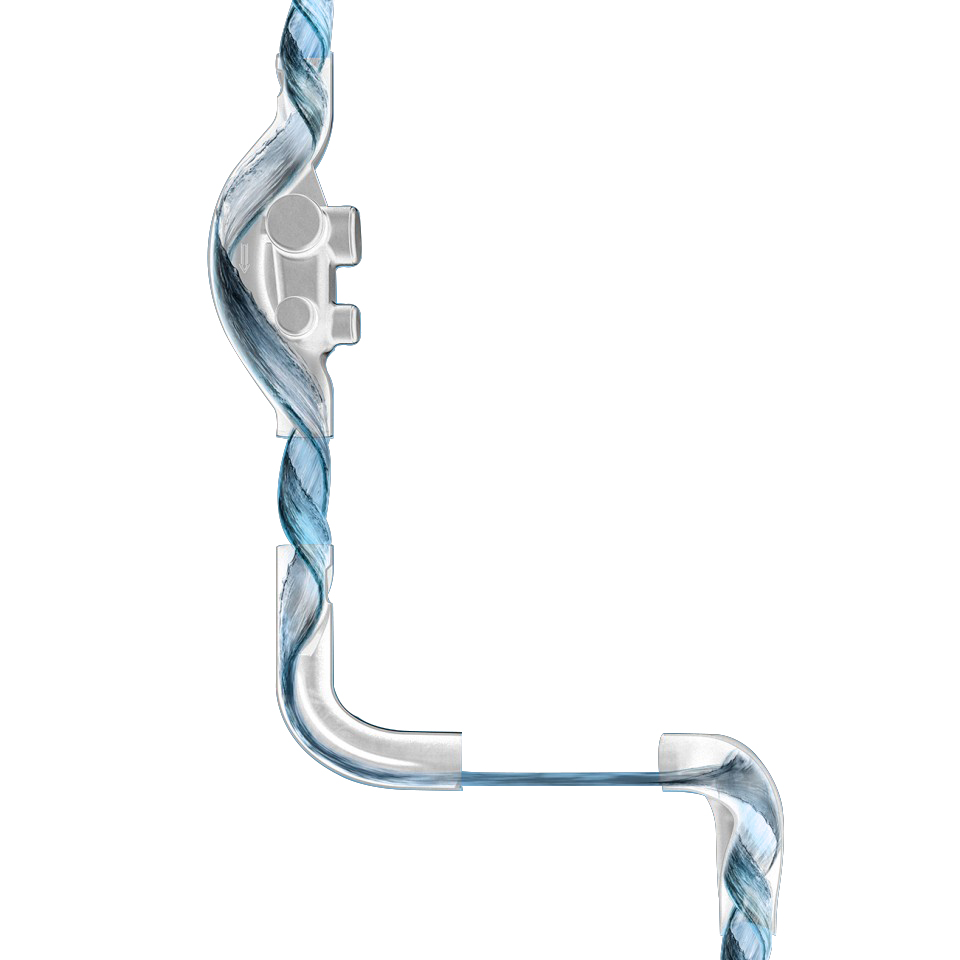
Dr.Arnd Gildemeister หัวหน้าฝ่ายผลิตภัณฑ์ระบบท่อของ Geberit เล่าให้เราฟังเมื่อเราแวะไปเยี่ยมชมโรงงาน รวมทั้งศูนย์วิจัยและพัฒนาผลิตภัณฑ์ของ Geberit ที่ประเทศสวิตเซอร์แลนด์ว่า ภายหลังจากที่ทางแบรนด์ได้ปล่อยโปรดักต์ Geberit HDPE Sovent Fitting ออกมาสู่ตลาดในช่วงปี 2013 ซึ่งนอกจากจะเป็นนวัตกรรมท่อน้ำที่ถูกออกแบบโครงสร้างภายในใหม่ด้วยหลักชลศาสตร์ เปลี่ยนน้ำที่ไหลลงมาตรงๆ ให้หมุนเกลียวอยู่ที่บริเวณผิวท่อในความเร็วที่มากพอ เพื่อสร้างให้เกิดช่องอากาศ (air column) ขึ้นตรงกลางแล้ว การมาถึงของ Geberit HDPE Sovent Fitting ยังกลายเป็นทางเลือกที่ทำให้การออกแบบช่องชาฟต์นั้นประหยัดพื้นที่ลงได้มากพอสมควร
“ไม่ว่ายังไงก็ตาม ถ้าคอนเซ็ปต์ของระบบการจ่ายและระบายน้ำในอาคารยังไม่เปลี่ยน เราก็ยังจำเป็นต้องมีระบบท่ออยู่ แต่สิ่งที่จะเกิดขึ้นต่อไปแน่นอน คือวิธีการที่พวกเราวางผังและติดตั้งมันจะเปลี่ยนไป ซึ่งนั่นก็จะส่งผลให้การออกแบบทางเทคนิคของตัวท่อเองมันเปลี่ยนตามไปด้วย” — Dr.Arnd Gildemeister
ด้วยกระแสตอบรับที่ค่อนข้างดีของโปรดักต์ โดยเฉพาะอย่างยิ่งคุณสมบัติที่เกิดจากการพลิกวิธีการออกแบบระบบสุขาภิบาลไปโดยสิ้นเชิง วิศวกรของ Geberit จึงตัดสินใจนำผลลัพธ์ที่เกิดขึ้นนั้นมาพัฒนาต่อยอด ผ่านการออกแบบและจำลองการไหลของน้ำในคอมพิวเตอร์ด้วยการอาศัยหลักพลศาสตร์ของไหลเชิงคำนวณ (CFD) และทดลองสร้างต้นแบบขึ้นมาจริงๆ จนสุดท้ายโปรดักต์อีกสองชิ้นส่วนในซีรีส์เดียวกันอย่าง Geberit HDPE BottomTurn Bend และ Geberit HDPE BackFlip Bend ก็คลอดตามออกมา ซึ่ง Geberit ก็ยังคงใช้พอลิเอทิลีนความหนาแน่นสูง (HDPE) ซึ่งมีความยืดหยุ่นเป็นวัสดุหลักเช่นเคย แทนการใช้ PVC เหมือนอย่างที่เห็นเป็นท่อสีฟ้าๆ ในบ้านเราที่เนื้อวัสดุมีความเปราะ จึงทำให้แตกหักได้ง่ายกว่าในระหว่างอายุการใช้งาน

แม้ว่าข้อจำกัดข้อใหญ่ที่สุดของ Geberit SuperTube ในเวลานี้จะเป็นเรื่องของราคาที่ค่อนข้างสูงหลายเท่าตัวเมื่อเทียบกับท่อทั่วไป แต่สิ่งที่แลกมาด้วยต้นทุนราคาแพงนี้คือพื้นที่ขายที่เพิ่มขึ้นในแต่ละยูนิต อันเนื่องมาจากขนาดของช่องชาฟต์ที่ลดลงได้ราว 20-30% ซึ่งก็หมายถึงโอกาสที่เพิ่มขในการสร้างเม็ดเงินให้กับโครงการนั่นเอง ไม่ว่าจะเป็นโรงแรมหรือคอนโดมิเนียมก็ตาม นอกจากนี้ ด้วยคุณสมบัติของ Geberit HDPE BottomTurn Bend ที่สามารถวางระยะได้ยาวมากถึง 6 เมตร โดยไม่ต้องอาศัยความลาดเอียง (slope) ยังทำให้การเดินท่อบนฝ้าสามารถประหยัดพื้นที่ไปได้มากถึง 40% จนทำให้แต่ละยูนิตสามารถมีพื้นที่ใช้สอยพร้อมฝ้าเพดานที่สูงขึ้นได้ ซึ่งแน่นอนว่าโซลูชั่นนี้ก็ยิ่งเป็นทางเลือกที่ตอบโจทย์ให้กับบรรดาโครงการอสังหาริมทรัพย์ระดับบนได้มากทีเดียว น่าคิดเหมือนกันว่าหลังจาก Geberit SuperTube นี้แล้ว นวัตกรรมถัดไปที่จะเกิดขึ้นกับระบบสุขาภิบาล (ซึ่งมีความเร็วที่ต่างจากเทคโนโลยีทั่วๆ ไปในชีวิตประจำวันอยู่แล้ว) ไม่ว่าจะจาก Geberit หรือแบรนด์อื่นๆ ก็ตาม จะเป็นอะไรได้อีกบ้างในอนาคต

With the fundamental need to balance atmospheric pressure and air pressure inside a waste water pipe to enable unobstructed waste water drainage and eliminate the vacuum pressure, a vent pipe has become an important component in the sanitation system of modern architecture and particularly in high-rise structures. Nevertheless, it appears that the recently invented technology by Geberit known as Geberit SuperTube is presenting itself as a new and perhaps revolutionary alternative (if the production cost can be successfully reduced in the future) that will change the face of building system engineering.
During our visit to the Geberit factory and Research and Development Center in Switzerland, Dr. Arnd Gildemeister the Head of the brand’s Piping System Products shared some interesting information. Dr. Gildemeister recalled the release of Geberit HDPE Sovent Fitting in the market back in 2013 when the incorporation of hydraulic principles in the redesigned interior structure created a piping innovation, which enabled the water flowing down to swirl at the area around the pipe’s interior surface at a speed that was fast enough to generate an air column right in the middle. The arrival of Geberit HDPE Sovent Fitting became a solution that allowed for the size of the shaft to be significantly reduced.
“NEVERTHELESS, AS LONG AS THE CONCEPT OF WATER SUPPLY AND DRAINAGE SYSTEMS IN BUILT STRUCTURES DOESN’T CHANGE, PIPING SYSTEMS WILL STILL BE VERY MUCH NEEDED. BUT WHAT CAN CERTAINLY BE EXPECTED IS THE CHANGE IN THE DESIGN OF A PLAN AS WELL AS THE INSTALLATION, WHICH SIMULTANEOUSLY CAUSES THE DESIGN OF THE PIPE’S TECHNICAL FEATURES TO BE ALTERED” — DR.ARND GILDEMEISTER

With the positive feedback the product has received, and particularly with the special features brought about by the revolutionary design that entirely transforms the sanitation system, the engineering team of Geberit decided to further their development. Through the design and computer-generated simulation of water directions using Computational fluid dynamics (CFD) principles and the creation of a number of prototypes, the two products of the series named Geberit HDPE BottomTurn Bend and Geberit HDPE BackFlip Bend were finally conceived. Geberit still chooses high-density polyethylene (HDPE) as their material of choice over PVC, which is more commonly used despite its far inferior durability and shelf life.
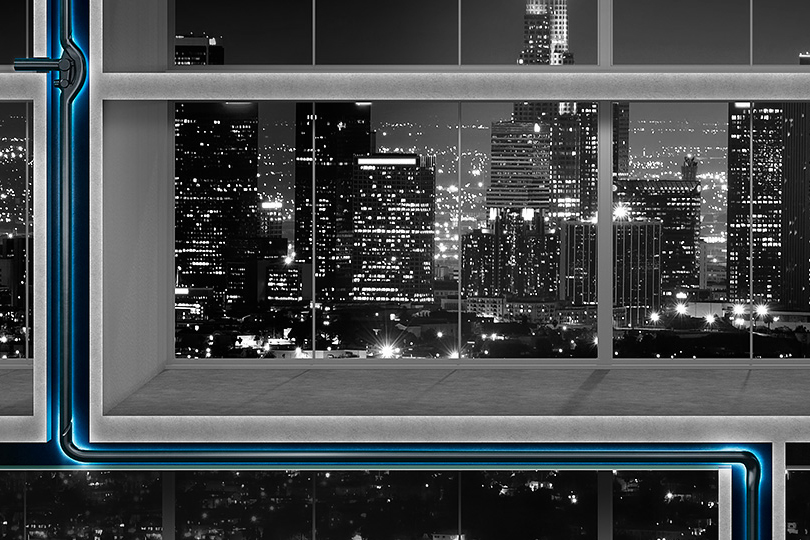
While Geberit SuperTube’s biggest limitation is its significantly higher selling price compared to other similar products available in the market, in exchange for its high production cost is a more usable space for each unit thanks to the 20-30% smaller shaft the innovation is able to offer. Ultimately, this means that a project, be it a hotel or a condominium, is able to generate more profit with the increased salable floor space. Not only that, the Geberit HDPE BottomTurn Bend technologies allow for horizontal pipelines to be laid to a length of up to six meters without a slope. Consequentially, the system uses 40% less space in the suspended ceiling, resulting in a bigger functional space and a higher ceiling for each unit. Not only does what Geberit SuperTube has to offer make it a highly interesting solution for upscale development projects, but its arrival has intensified our anticipation and expectation for the future developments of sanitation system technology (which normally progresses at a much faster pace than other technologies) whether from Geberit or other brands within the industry.


